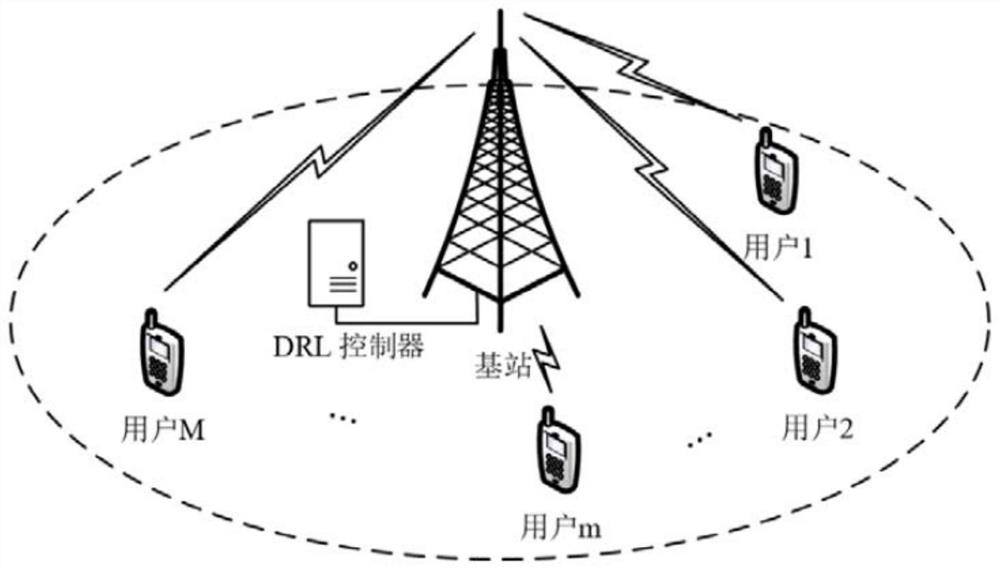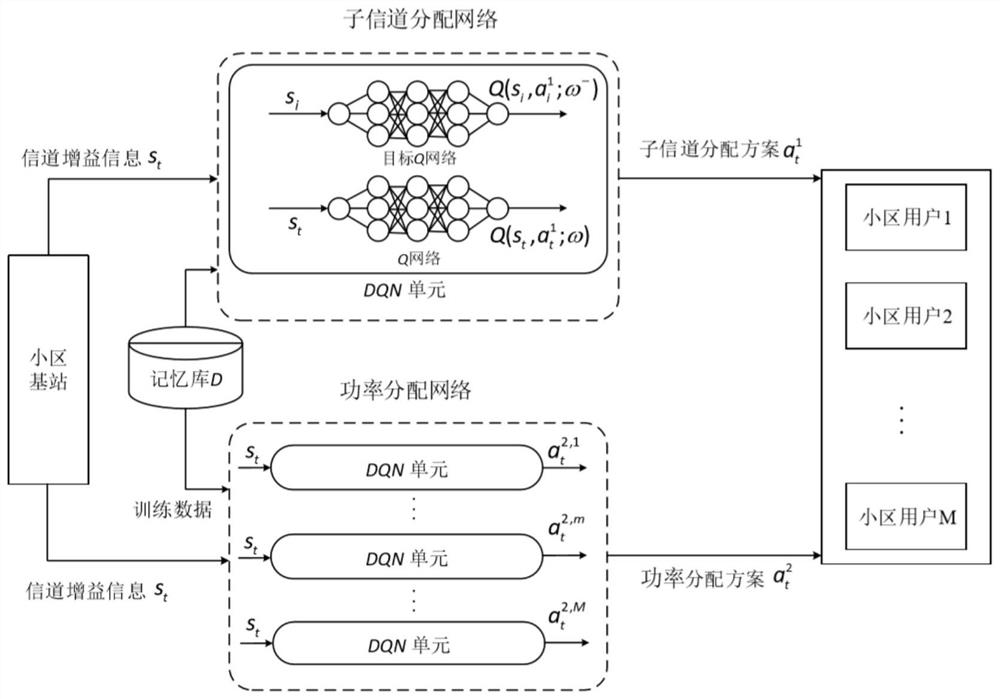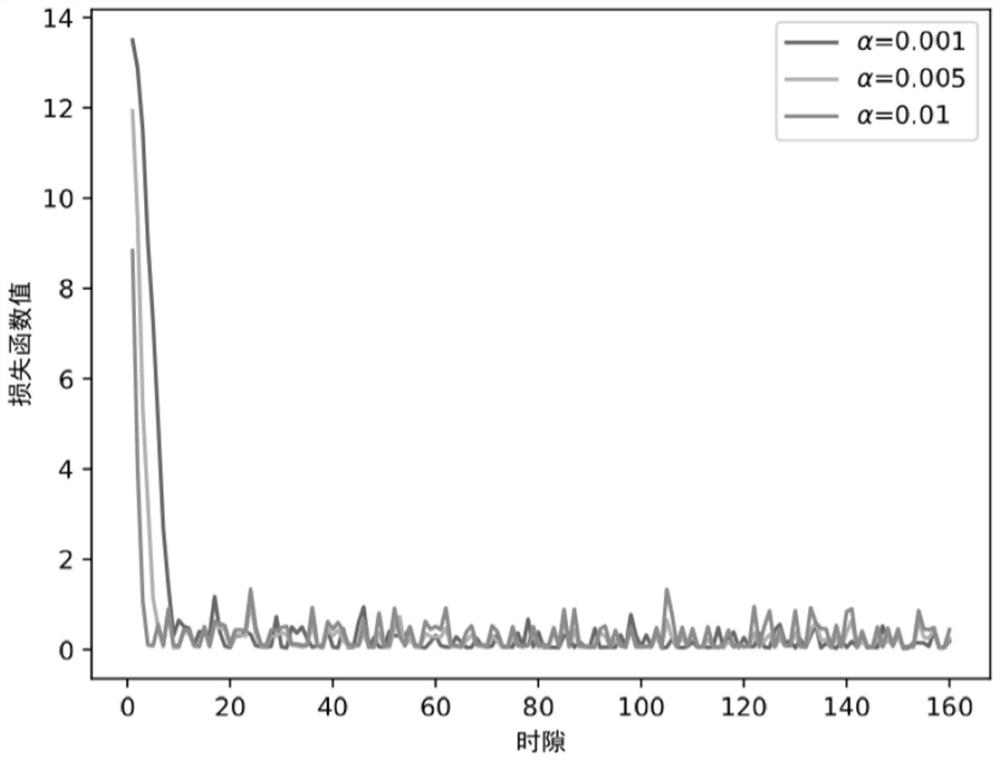Uplink NOMA resource allocation method based on deep reinforcement learning
A technology of resource allocation and reinforcement learning, which is applied in the field of mobile communication and reinforcement learning, and can solve problems such as long time spent on iterative algorithms, a large amount of time, and high computational complexity in the optimization process.
- Summary
- Abstract
- Description
- Claims
- Application Information
AI Technical Summary
Problems solved by technology
Method used
Image
Examples
Embodiment Construction
[0056] The embodiments of the present invention are described in detail below. This embodiment is implemented on the premise of the technical solution of the present invention, and detailed implementation methods and specific operating procedures are provided, but the protection authority of the present invention is not limited to the following implementation example. Based on any embodiment of the present invention, all other embodiments obtained by persons of ordinary skill in the art without creative efforts shall fall within the protection scope of the present invention.
[0057] The invention is a joint sub-channel allocation and power allocation method of an uplink NOMA system based on DRL. Such as figure 1 As shown, the base station in the NOMA wireless communication system is located in the center of the cell, and the sub-channel allocation network and power allocation network of the present invention are both located in the DRL controller at the base station. M user...
PUM
 Login to View More
Login to View More Abstract
Description
Claims
Application Information
 Login to View More
Login to View More - R&D
- Intellectual Property
- Life Sciences
- Materials
- Tech Scout
- Unparalleled Data Quality
- Higher Quality Content
- 60% Fewer Hallucinations
Browse by: Latest US Patents, China's latest patents, Technical Efficacy Thesaurus, Application Domain, Technology Topic, Popular Technical Reports.
© 2025 PatSnap. All rights reserved.Legal|Privacy policy|Modern Slavery Act Transparency Statement|Sitemap|About US| Contact US: help@patsnap.com



